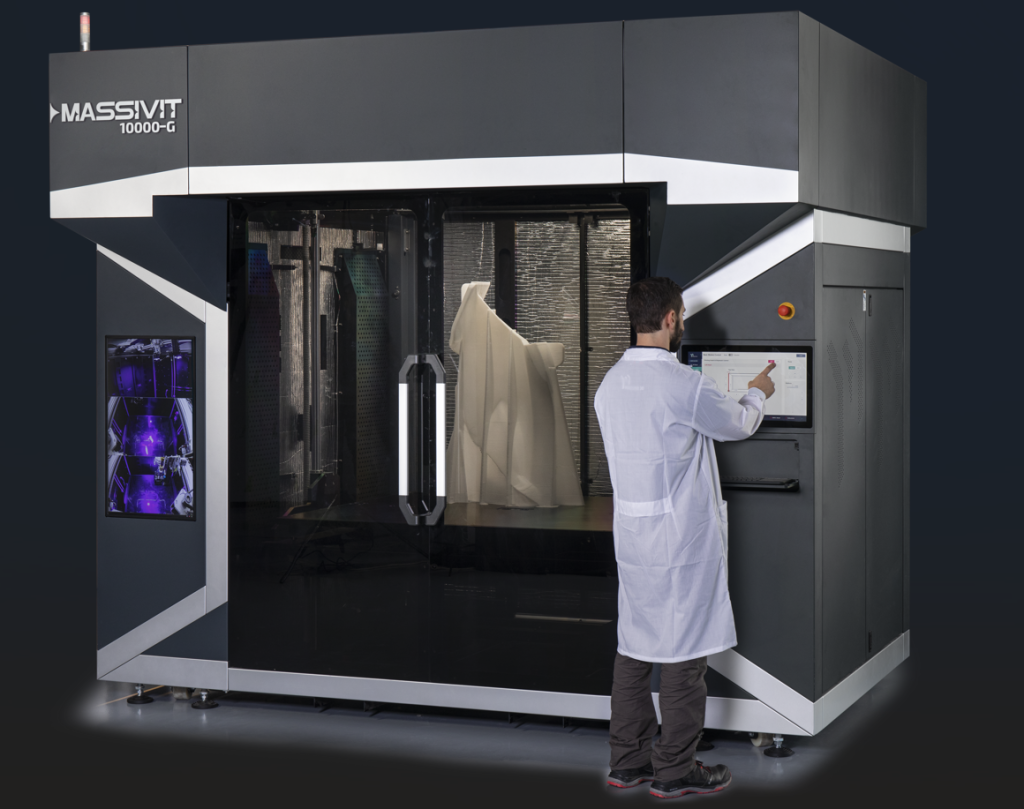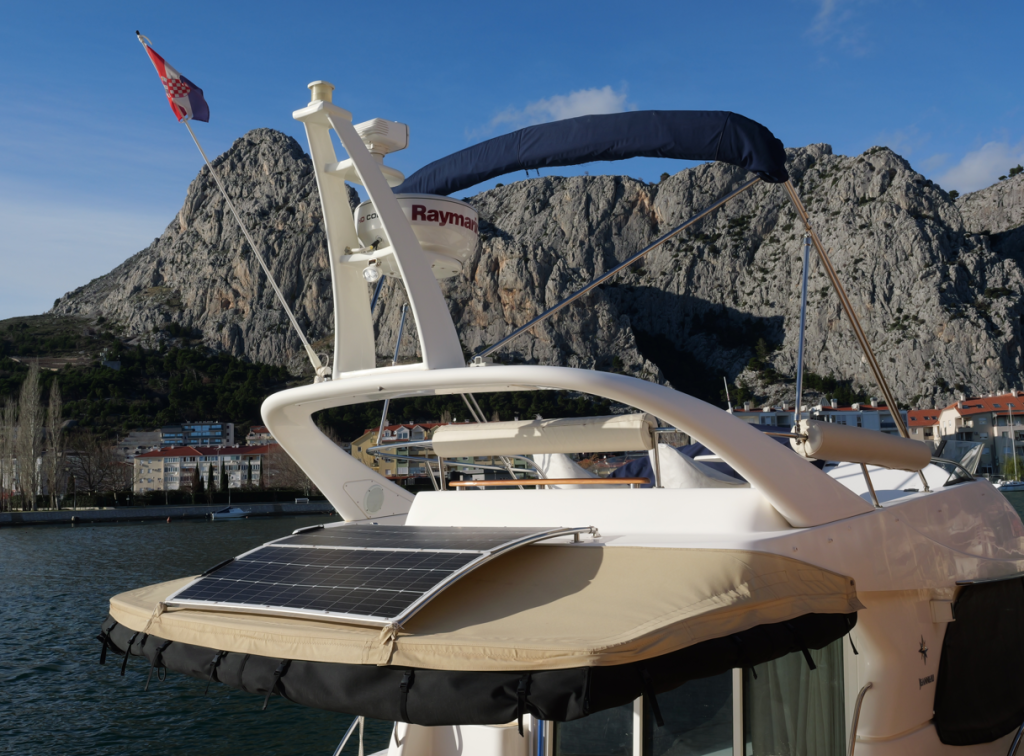Large format 3D printer provider Massivit 3D has unveiled its Massivit 10000-G for the first time at RAPID + TCT 2023 and provided live 3D printing demonstrations for visitors.
The Massivit 10000-G is a new addition to Massivit’s Cast In Motion product line, which aims to automate the production of molds for composite materials manufacturing and provide a range of large-scale custom manufacturing applications. The system is designed to address common bottlenecks in mold production and streamline the manufacturing process. Previously, the manufacturer had unveiled the 10000-G at Formnext 2022.
Erez Zimerman, CEO of Massivit, said, “As the leading provider of large-scale additive systems, we’re thrilled to offer the North American additive manufacturing sector this opportunity to experience the new game-changing 10000-G in action. Following the launch last year of our award-winning 10000 additive system, we’ve now developed the capability to directly print industrial molds for composites and to also create complex custom end parts all in one system – a true milestone for the manufacturing market.”

Digital Tooling for Composite Materials
The Massivit 10000-G is capable of digitally producing intricate molds, mandrels, master tools, jigs, and fixtures for composite materials production. Compared to conventional methods, the 10000-G can directly cast industrial molds up to 80% faster and offers a range of digital tooling processes including molding for thermoforming, resin transfer molding, and reaction injection molding, says the manufacturer.
The epoxy-based casting material used by Massivit offers a high level of performance and provides uniform strength and hardness in all directions, even at high temperatures. This is in contrast to other additive tooling technologies available in the market. Traditional molding processes for composites have relied on steel or aluminum, which can be expensive, have long lead times, and result in significant material waste.
The Massivit 10000-G is equipped with Gel Dispensing Printing (GDP) capabilities, which enables it to offer a diverse range of additive manufacturing and custom composite manufacturing applications.
Massivit’s Gel Dispensing Printing Technology
Massivit’s GDP technology is a proprietary 3D printing technology that allows for the high-speed and precise production of large, lightweight, and hollow 3D printed objects. The technology operates by dispensing a photopolymer gel material from a print head onto a build platform, which is then solidified using UV light to form a solid 3D object.
The GDP technology has been widely adopted across 40 countries and is capable of rapidly producing full-scale end parts and functional prototypes suitable for use in various industries such as automotive, marine, railway, and engineering. With the addition of GDP capabilities to the 10000-G system, it is now possible to produce parts that have flame-retardant, impact-resistant, high-definition, or transparent properties, claims Massivit.
Zimerman added, “At Massivit, our objective is to automate areas of industrial production that have traditionally required time-consuming and costly skilled manual intervention. Composite manufacturing is one such area, and we have the ability through our 10000-G machine to truly disrupt the future production of composite parts and components.”

Technical specifications and pricing
| Print Configuration | CIM technology: 1 printing head and 1 casting head Thermally-controlled print chamber up to 60°C. Removable & interchangeable print tray. Printed shell layer thickness ranges from 0.5 mm-1.3 mm |
| Print Volume | W x L x H: 1.42 x 1.11 x 1.5 m / 4’8” x 3’8” x 4’11” |
| Maximum Object Weight | 300kg /660 lbs |
| Motion System | Linear motors for X/Y print head and servo motors for print tray (Z) height |
| Materials | CIM 500 casting material and Dimengel water-breakable material |
| Workflow and Software | Software on the machine: proprietary front-end software. Input format: STL. Smart Slicer (CAD SW not included) |
| System Dimensions | W x L x H: 3.1 x 2.2 x 3.1 m / 10’2” x 7’3” x 10’2” |
| CMS Dimensions | W x L x H: 1.3 x 1.3 x 1.7 m / 4’3” x 4’3” x 5’7” |
| System Weight | Unpacked ~3500 kg / 7716 lbs. Packed ~4000 kg / 8818 lbs. CMS Unpacked ~621 kg / 1369 System Weight lbs. Packed ~687 kg / 1514 lbs |
What does the future of 3D printing for the next ten years hold?
What engineering challenges will need to be tackled in the additive manufacturing sector in the coming decade?
To stay up to date with the latest 3D printing news, don’t forget to subscribe to the 3D Printing Industry newsletter or follow us on Twitter, or like our page on Facebook.
While you’re here, why not subscribe to our Youtube channel? Featuring discussion, debriefs, video shorts, and webinar replays.
Are you looking for a job in the additive manufacturing industry? Visit 3D Printing Jobs for a selection of roles in the industry.
Featured image shows Massivit 10000-G 3D printer. Image via Massivit 3D.


